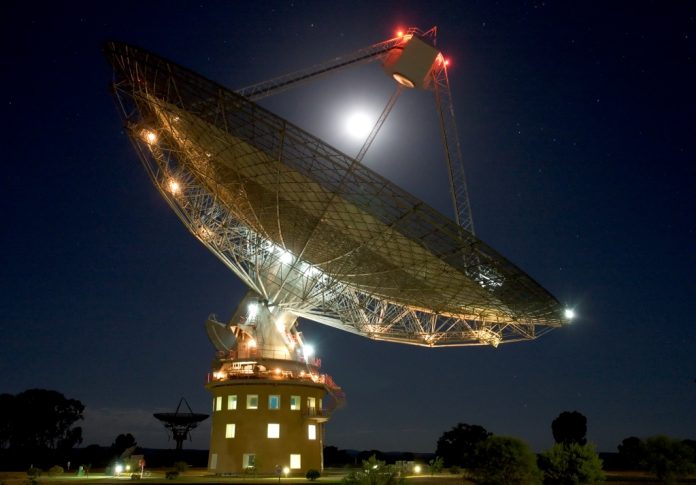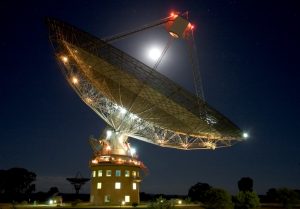
A CSIRO-developed technology has been used for the first time last week as part of a global initiative that aims to investigate whether intelligent life exists beyond our planet.

Image credit: Shaun Amy / CSIRO
Breakthrough Listen, a $100 million initiative that aims to determine whether civilisations exist beyond Earth, announced that it has made its first observations using CSIRO’s Parkes radio telescope after 14 days of commissioning and testing.
The 10-year astronomical search, which was founded by internet entrepreneur Yuri Milner and Stephen Hawking, is already using two US telescopes – the Green Bank Telescope in West Virginia and the Automated Planet Finder at Lick Observatory in California – in their ongoing surveys.
Parkes’ “first light” for Breakthrough Listen was capped off with an observation of the newly-discovered Earth-size planet orbiting the nearest star to our Sun, Proxima Centauri.
Proxima Centauri – a red dwarf star 4.3 light years from Earth – is known to have a planet (‘Proxima b’) orbiting within its habitable zone, the region where water could exist in liquid form on the planet’s surface.
Dr Andrew Siemion, Director of Berkeley SETI Research Centre and leader of the Breakthrough Listen science program, said such ‘exo-Earths’ are among the primary targets for Breakthrough Listen.
He said that although the chances of any particular planet hosting intelligent life-forms were “probably minuscule”, ‘Proxima b’ was a fitting first observation for Parkes.
“To find a civilisation just 4.2 light years away would change everything,” Mr Siemon added.
Dr Douglas Bock, Director of CSIRO Astronomy and Space Science, said the Parkes telescope was one of the most highly cited radio telescopes in the word, perfectly positioned to observe parts of the sky that can’t be seen from the northern hemisphere, including the centre of our own Milky Way galaxy, large swaths of the Galactic plane, and numerous other galaxies in the nearby Universe.
“The Parkes radio telescope has a long list of achievements to its credit, including the discovery of the first ‘fast radio burst’,” he said.
“Its unique view of the southern hemisphere sky and cutting-edge instrumentation means it now also has a great opportunity to contribute to the search for extra-terrestrial life.”
In the meantime, Swinburne University of Technology is collaborating with University of California, Berkeley, and CSIRO to design and implement a signal-processing and data-storage system for the project that will make the Breakthrough Listen data available to the science community.
Professor Matthew Bailes, the Breakthrough Listen project’s Australian science coordinator, said Breakthrough Listen would not only hunt for ET, but would also seek out other naturally occurring phenomena such as pulsars and fast radio bursts, which are a large part of Parkes’ present work.
“The Australian science community welcomes the opportunity to share the Breakthrough Listen data for other ongoing research projects,” he concluded.



















